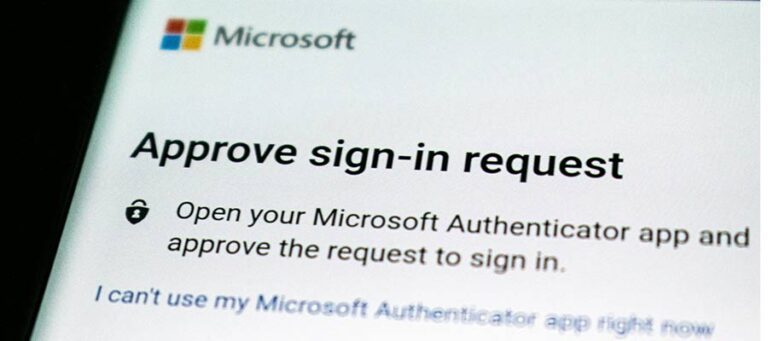In today’s digital age, a functional and user-friendly website is the foundation of success for businesses and individuals. A well-designed website not only attracts visitors but also retains them and encourages them to take desired actions. However, even the most meticulously designed websites can experience bugs that hinder their performance, negatively impacting the user experience and search engine rankings. In this comprehensive guide, we’ll dive into some of the most common website errors and provide expert advice on how to fix them to improve your site’s SEO and ensure a seamless user experience.
What is a Website Error?
Understanding the basics of website errors is important before diving into specific types and solutions. Simply put, website errors refer to unexpected and unexpected behavior that occurs when a user interacts with a website. These errors can manifest in a variety of ways, such as broken links, slow load times, security holes, or compatibility issues. Furthermore, These incidents can disrupt user journeys, hinder interaction, and compromise data security. By familiarizing yourself with website errors, you can proactively address them, improve user experience, and boost your site’s search engine rankings.
When a user encounters a website error, it’s like hitting an obstacle while navigating through a city. Imagine you are following a map to reach a destination, but suddenly encounter a closed road or a dead-end road. In the digital realm, a website error is like a closed road: it prevents users from reaching their intended destination on your website. Site errors can take many forms, from a “Page Not Found” message (error 404) to an insecure connection warning (SSL certificate issue). Understanding these errors allows you to improve your site’s functionality, security, and overall user satisfaction.
Why is it Important to Know About Website Errors?
Recognizing the significance of understanding website errors can help you address them effectively. Here are five reasons why:
1. Enhanced User Experience
Website errors can lead to a poor user experience, resulting in high bounce rates and reduced engagement. When users encounter broken links, slow-loading pages, or inactive elements, their frustration grows, causing them to abandon your site. Moreover, a high bounce rate tells search engines that your content may not be relevant or valuable, potentially reducing your rankings in search results. By fixing website errors, you can create a more seamless and engaging user experience that keeps visitors on your site longer and encourages them to explore more.
2. Improved Search Engine Ranking
Search engines consider a website’s speed, security, and usability when determining search rankings. Google and other search engines favor websites that provide an optimal user experience. Slow-loading pages, security holes, and compatibility issues can negatively impact your site’s rankings. Search engines aim to provide users with reliable and relevant results, and sites with errors may not meet these criteria. By fixing these errors, you align your site with search engine algorithms, increasing your chances of ranking higher in search results.
3. Enhanced SEO and Organic Traffic
Resolving website errors improves SEO, enhances search visibility, and drives organic traffic. A website that functions smoothly loads quickly, and provides a secure browsing experience is more likely to rank higher in search engine results. Improved SEO leads to increased visibility among your target audience, driving organic traffic to your website. Addressing errors not only boosts your site’s overall performance but also positions it as a valuable resource in the eyes of search engines, contributing to sustained organic traffic growth.
4. Building Credibility and Trust
A website that is transparent and error-free builds credibility, trust, and a positive brand perception of its users. Users who encounter broken links or security warnings may question the legitimacy and reliability of your site. On the other hand, a website that consistently delivers a smooth, error-free experience builds credibility and trust with its audience. A positive user experience promotes favorable brand awareness, causing users to see your brand as trustworthy, professional, and responsive to their needs.
5. Data Security and Online Risks
Proactively addressing website errors minimizes potential data breaches, security vulnerabilities, and online risks. Certain bugs, such as security holes, can expose your site and users to potential cyber threats and data breaches. Hackers often exploit vulnerabilities to gain unauthorized access, compromise user data, and damage your brand reputation. By identifying and correcting errors, you create a safer online environment, protect user information, and protect your website from malicious attacks. Proactive error handling demonstrates your commitment to data security and builds user confidence in your platform.
Navigating the 7 Most Common Website Errors
Error 1: Page Not Found (404 Error)
i. Explanation of 404 Error and Its Causes
The dreaded 404 error is like a dead end on the web. This happens when the user tries to access a page that doesn’t exist on the server. This error can be caused by incorrectly entered URLs, outdated links, or pages that have been moved or deleted without proper redirects.
ii. Fixing Broken Links and Updating URLs
To combat the threat of 404 errors, it is imperative to perform regular checks of your site to identify broken links and outdated URLs. In essence, use tools like Google Search Console to identify these issues and take timely corrective action. Update internal and external links to ensure they direct users to relevant and functional pages.
iii. Implementing Proper Redirects and Custom 404 Pages
When pages are moved or deleted, it’s important to set up 301 redirects. These redirects particularly guide users and search engines to new content locations, maintain link fairness, and prevent users from encountering 404 errors. Additionally, create a personalized 404 page to not only apologize for the inconvenience but also provide users with navigation options to explore other areas of your site.
Error 2: Slow Page Load Time
i. Discussing the Effects of Slow Loading
In today’s fast-paced digital landscape, users have little patience for slow websites. Slow page load times can lead to high bounce rates and annoyed visitors. Google also views page speed as a ranking factor, making it imperative for SEO success.
ii. Optimizing Images and Files
Large and unoptimized images are one of the main culprits for slow load times. Therefore, compress and resize images without losing quality to dramatically reduce load times. Additionally, minify CSS, JavaScript, and HTML files to streamline data transmission.
iii. Minimizing HTTP Requests and Using Caching Techniques
Each element on a webpage requires an HTTP request, contributing to load times. Minimize the number of requests by combining files and using CSS sprites for images. Additionally, leverage browser caching to store static resources locally, reducing load times for returning visitors.
Error 3: SSL Certificate Issues
i. Understand SSL Certificates and Their Purpose
An SSL certificate is a digital certificate that establishes an encrypted connection between a user’s browser and a web server. They ensure secure data transmission, create trust, and are essential for websites dealing with sensitive information.
ii. Identifying Common SSL Errors
SSL errors can manifest themselves in various forms, such as browser warnings or mixed content issues. Common causes especially include expired certificates, incompatible domains, and insecure protocols.
iii. Renewing, Installing, and Configuring SSL Certificates
Regularly monitor and renew SSL certificates before they expire to maintain a secure connection. Install the correct certificate and configure your server to prioritize HTTPS. Use tools like “Why no Padlock?” whenever to identify and correct mixed content issues.
Error 4: Cross-Browser Compatibility
i. Explaining the Importance of Cross-Browser Compatibility
With the multitude of web browsers available, ensuring a consistent user experience across different platforms is paramount. Cross-browser compatibility ensures that your website looks and works as expected, regardless of the user’s preferred browser.
ii. Testing and Identifying Browser Compatibility Issues
Thoroughly test your website on different browsers to identify compatibility issues. In general, tools like BrowserStack can simulate different environments and help you identify specific issues.
iii. Implementing Browser-Specific CSS and JavaScript Fixes
Create targeted CSS and JavaScript fixes to address browser-specific issues. Use conditional statements or feature detection to provide custom styles and features based on the user’s browser.
Error 5: Website Security Vulnerabilities
i. Discussing the Risks Associated with Website Vulnerabilities
Website vulnerabilities can have serious consequences, including data breaches, malware infections, and compromised user information. Such incidents not only damage your reputation but can also lead to SEO penalties.
ii. Regularly Updating CMS and Plugins
Outdated Content management systems (CMS) and plugins are prime targets of cyberattacks. For this reason, keep your CMS and plugins up to date to fix security holes and ensure a secure digital environment.
iii. Implementing Security Measures Like Firewalls and Strong Passwords
Use robust security measures, including a web application firewall (WAF), to combat common cyber threats. Enforce strong password policies and then implement multifactor authentication (MFA) for an extra layer of protection.
Error 6: Broken Forms and Functionality
i. Analyzing the Impact of Broken Forms on User Experience
Forms are essential for user interaction, whether for contact, registration, or purchase. Broken forms frustrate users and hinder their ability to interact with your site.
ii. Testing and Debugging Form Code
Regularly test form submissions to make sure they work as expected. Quickly debug and resolve any issues to avoid losing leads or user data.
iii. Ensuring Proper Functionality of Interactive Elements
Interactive elements like drop-down menus, accordions, and sliders significantly improve user engagement. Thoroughly test and optimize these elements to ensure smooth operation and a pleasant user experience.

Error 7: Mobile Responsiveness Issues
i. Highlighting the Importance of Mobile-Friendly Websites
With a significant portion of web traffic coming from mobile devices, a mobile-friendly website is no longer a luxury but a necessity. Henceforth, Mobile-friendliness has a direct impact on user experience and SEO rankings.
ii. Testing and Optimizing for Mobile Responsiveness
Regularly test your website’s mobile responsiveness across various devices and screen sizes. Google’s Mobile-Friendly Test can provide insights into potential issues that need to be addressed.
iii. Implementing Responsive Design Techniques and Frameworks
Apply responsive design principles and frameworks like Bootstrap to create flexible and adaptable layouts, indeed ensuring a seamless user experience across different devices.
Conclusion
Altogether, a well-functioning, error-free website is an important asset in today’s digital landscape. By fixing common website errors and implementing the solutions outlined in this guide, you can explicitly improve your website’s SEO, provide a superior user experience, and build trust with your visitor’s access. Remember that a well-maintained website not only attracts and retains users but also contributes to your overall online success.
In case you have found a mistake in the text, please send a message to the author by selecting the mistake and pressing Ctrl-Enter.






